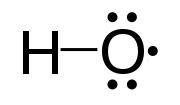I'm sure you've seen people around campus with e-cigarettes blowing out these big clouds of what looks like smoke (it's not, it's water vapor). It's actually kind of impressive how much vapor some of these things put out.
.jpg) |
| Image Courtesy of CFCF |
A surprising number of people use e-cigarettes. Per the CDC,
21.6% of people age 18-24 have used or have tried using an e-cig, a number that only seems to be rising. They're commonly touted as the safe and healthy way to get your nicotine fix, as instead of burning tobacco (which comes with a whole myriad of health consequences I'm sure you're familiar with), e-cigarettes uses water vapor as a way of delivering nicotine to the body.
Combine this rather new delivery method with almost no regulation from the FDA, and you're left with a lot of unanswered questions. And not a lot of people are there to answer those questions, as not much is known yet about the health affects of using these popular devices.
Researchers at the Penn State College of Medicine are trying to find more about what e-cig vapor actually contains, which would help indicate what the long-term health affects may be. As John P. Richie Jr., professor of public health sciences and pharmacology says, "While e-cigarette vapor does not contain many of the toxic substances that are known to be present in cigarette smoke, it's still important for us to figure out and to minimize the potential dangers that are associated with e-cigarettes."
Many of the toxic substances present in large quantities in cigarette smoke are aldehyde containing chemicals, which can restrict
airways. A common chemical often referenced in this category is formaldehyde (you know, that stuff they use to preserve organs and dead animals).
 |
Formaldehyde
Image Courtesy of Wereo |
Luckily, studies have found that this particular chemical isn't present in significant quantities in e-cig vapor (yay!). However, thanks to the studies by Penn State College of Medicine, another class of harmful chemicals
are: free radicals. Free radicals are atoms or molecules that have unpaired valence electrons (electrons that participate in chemical bonding). They're produced when the nicotine containing liquid is heated within the e-cigarette. You probably learned in chemistry class that valence electrons normally go in pairs. When they're not in pairs, they're kind of sad and lonely... They desperately want to find a buddy. This is leads to them being incredible reactive and unstable.
 |
Poor guy on the end looks so lonely..
Image Courtesy of SmokeyJoe |
These free radicals can react with the cells in your body, most notably DNA, causing mutations. And unfortunately, whenever you start talking about mutations, cancer comes into the equation. These free radicals contribute to cancer in cigarette smoke, and it would make sense that the same would prove true for e-cigarettes. Luckily, it was found that e-cig smoke contains 100 to 1,000 times less free-radicals than traditional cigarette smoke. Dr. Richie states that "the levels of [free] radicals that we're seeing are more than what you might get from a heavily air-polluted area but less than what you might find in cigarette smoke." It is still not known exactly what affect these specific free radicals might have on the body, which is why further research is currently being done to identify what free radicals are being produced and how they might interact with the body. While it's no reason to ditch e-cigs for traditional cigarettes (especially when e-cigs are helping smokers quit their addiction), it shows that this new form of nicotine still needs to be looked at more closely, and potentially regulated more to ensure the safety of those using them.
If you'd like to read the full study, it can be found on PubMed
here.
.jpg)


